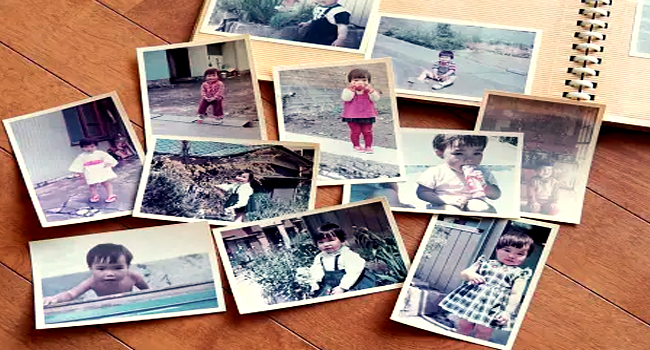In the ever-evolving landscape of song, specific albums are timeless monuments to creativity, innovation, and excellence. These traditional albums have transcended the bounds of audiences long after their preliminary release. From the modern sounds of The Beatles’ “Sgt. Pepper’s Lonely Hearts Club Band” to the poetic lyricism of Joni Mitchell’s “Blue,” the iconic statistics have become touchstones for track lovers for generations.
In this newsletter, we will discover the enduring legacy of conventional albums and the timeless tune that maintains to captivate listeners around the arena.
1.The Essence of Classic Albums:
What defines a conventional album? At its center, a traditional album is more than just a collection of songs—it is a cohesive frame of labor that shows its creators’ creative vision, creativity, and craftsmanship.
From concept albums that tell a tale from beginning to finish to collections of standalone tracks that capture a second in time, traditional albums are available in many paperwork and genres.
What unites them is their potential to head beyond the restrictions of time and location, offering listeners a window into the beyond at the same time as last relevant and resonant in the present.
2.The Evolution of Musical Genres:
Classic albums span an extensive range of musical genres, from rock and pa to jazz, blues, people, and past. Each fashion has iconic albums that have recently persuaded artists and musicians.
Whether it is the groundbreaking experimentation of Pink Floyd’s “The Dark Side of the Moon” or the soulful grooves of Marvin Gaye’s “What’s Going On,” classic albums function as pillars of their respective genres, shaping the evolution of musical patterns and frightening generations of musicians to come.
3.The Artistry of Songwriting:
At the coronary heart of every traditional album lies the artistry of songwriting—the ability to craft lyrics and melodies that resonate with audiences profoundly and emotionally.
From reflective ballads to anthemic sing-alongs, conventional albums exhibit and revel in the general variety of human emotion, supplying listeners with a soundtrack for every second of their lives.
Whether it is the confessional poetry of Bob Dylan’s “Blood at the Tracks” or the social statement of Stevie Wonder’s “Songs Inside the Key of Life,” traditional albums use the energy of songwriting to discover normal subjects of love, loss, desire, and resilience.
4.The Role of Production and Arrangement:
In addition to songwriting, the production and arrangement of traditional albums play a crucial role in shaping their sonic identification and standard effect.
From lush orchestral arrangements to stripped-down acoustic performances, classic albums use many manufacturing strategies to create immersive listening reviews that transport listeners to new worlds.
Whether it is the groundbreaking studio magic of The Beach Boys’ “Pet Sounds” or the uncooked strength of The Clash’s “London Calling,” conventional albums push the limits of sound and technology to create songs that are undying and progressive.
5.The Cultural and Social Impact:
Beyond their musical achievements, conventional albums frequently have a profound cultural and social impact, reflecting their time’s social, political, and cultural moves.
From protest songs that gave voice to the unvoiced to anthems of empowerment and harmony, conventional albums have served as rallying cries for change and proposals for social moves around the area.
Whether it’s miles the countercultural ethos of The Beatles’ “Revolver” or the feminist anthems of Beyoncé’s “Lemonade,” classic albums preserve to spark conversations and inspire movement on issues of race, gender, identification, and justice.
6.The Legacy of Classic Albums:
As time passes and musical tastes evolve, the legacy of conventional albums only grows more potent. These iconic records continue to encourage new generations of artists, musicians, and listeners, shaping the future of tune and leaving an indelible mark on popular lifestyle.
Whether it’s through cover versions, tributes, or reinterpretations, classic albums live relevant and influential, serving as touchstones for artists searching to pay homage to the beyond while forging new paths ahead.
As we rediscover and revisit the undying treasures, we have fun with the long-lasting legacy of traditional albums and the timeless songs that still resonate with us these days.
Classic albums are beacons of musical excellence and innovative integrity in an international of fleeting developments and ephemeral repute.
From their revolutionary songwriting and masterful manufacturing to their cultural effect and lasting legacy, traditional albums continue to captivate listeners and inspire admiration for generations.
As we rediscover the one’s undying treasures, we embark on an adventure of musical discovery and private enrichment, connecting with the emotions, evaluations, and stories that have fashioned our lives and our international.
So allow us to rejoice in the iconic energy of conventional albums and the undying song that still resonates with us nowadays.
FAQs
1.What defines a “traditional album” within the context of tune?
A traditional album refers to a recording that has endured the test of time, remaining influential and revered long after its preliminary launch. These albums frequently showcase inventive excellence, innovation, and cultural significance that continue to resonate with audiences throughout generations.
2.What are a few examples of traditional albums mentioned within the article?
Examples of conventional albums encompass “The Dark Side of the Moon” with the aid of Pink Floyd, “Blue” through Joni Mitchell, and “Sgt. Pepper’s Lonely Hearts Club Band” through The Beatles, amongst others. These albums are celebrated for their musical brilliance, cultural effect, and enduring recognition.
3.Why do conventional albums resonate with audiences at some stage in generations?
Classic albums resonate with audiences because of their undying features, which include modern musical preparations, poignant lyrics, and emotional intensity. They seize the essence of their generation while addressing common subjects and reviews that transcend time and region.
4.How have conventional albums inspired artists and musicians in recent times?
Classic albums are:
- A property of inspiration for artists and musicians.
- Influencing their innovative strategies.
- Musical styles.
- Creative visions.
By analyzing and appreciating the craftsmanship and innovation of conventional albums, modern-day artists can take a look at the masters and hold on to push the boundaries of song.
5.What function do traditional albums play in track records and cultural background?
Classic albums are vital to song and cultural records by shaping the evolution of musical genres, influencing famous ways of life, and leaving a long-lasting effect on society. They function as touchstones for future generations, imparting belief in their time’s social, political, and innovative actions.
6.How can listeners take advantage of rediscovering conventional albums?
Listeners can benefit from rediscovering traditional albums by gaining a deeper appreciation for musical craftsmanship, exploring distinct genres and patterns, and connecting with the emotions and research in the song. Rediscovering classic albums gives a journey of musical discovery and private enrichment.
7.What makes conventional albums timeless and enduring in their enchantment?
Classic albums are timeless and enduring in their enchantment due to their functionality to awaken feelings, initiate concepts, and encourage creativity. They resonate with audiences on a visceral degree, transcending the limitations of time and space to speak to the human condition in all its complexity and beauty.

